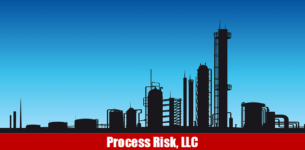Simultaneous Operations (SIMOPS) Review
ConsultingSimultaneous operations (SIMOPs) are situations where two or more operations or activities occur at the same time and place in a facility.
They may interfere or clash with each other and may involve risks that are not identified when each activity is considered by itself. Thus, they can increase the risks of the activities or create new risks. A number of major process industry accidents have involved simultaneous operations.
In the wake of Hurricane Harvey, the Chemical Safety Board (CSB) issued a Safety Alert on precautions needed during restart of processes that were shut down. The CSB noted that startup requires a higher level of attention and care than normal processing because numerous activities occur simultaneously. This is one example of when simultaneous operations occur. Other examples include construction activities near active equipment and maintenance activities near process operations.
Usually, the situations involved in simultaneous operations are not considered during process hazards analysis (PHA) studies which focus attention on individual process operation. Moreover, PHA teams may not recognize the importance of examining how simultaneous operations may interfere with each other. Furthermore, it is difficult to do so within the constraints of a regular PHA study. Consequently, a SIMOP review should be performed prior to conducting simultaneous operations, for example, before restarting a process after shutdown.
Details
SIMOP Studies
Simultaneous operations (SIMOPs) are situations in processes where two or more operations or activities occur at the same time and place. They may interfere or clash with each other and may involve risks that are not identified when each activity is considered by itself. Thus, they can increase the risks of the activities or create new risks.
Simultaneous operations often involve work in the same area by multiple contractors and subcontractors or multi-disciplinary workers whose work may overlap and/or interact. For example, construction activities near active equipment such as crane lifts over a storage tank containing a toxic material may result in a release from dropped objects. Similarly, a maintenance activity near another process operation such as hot work in the vicinity of a tank truck unloading a flammable material may result in a fire.
A number of major process industry accidents have involved simultaneous operations.
The situations addressed by SIMOP studies usually are not considered during process hazards analysis (PHA) studies which focus attention on individual process operation. Furthermore, PHA teams may not recognize the importance of examining how simultaneous operations may interfere with each other. Moreover, it is difficult to do so within the constraints of a regular PHA study.
A SIMOP review identifies possible interactions between activities that may adversely impact people, property, or the environment. SIMOP reviews are an important adjunct to the performance of PHA studies such as hazard and operability (HAZOP) studies.
Consulting Services
Consequence Modeling
Due Diligence Support Dust Hazard Analysis and Management
Dust Hazard Analysis and Management
Emergency Response Programs
Expert Technical Witness - Legal Support Services
Facility Siting & Consequence Modeling
HAZID
Hierarchy of Controls Analysis (HCA)
Human Factors Review and Analysis
Incident Investigation
Inherently Safer Technology
Layers of Protection Analysis
LNG Industry Support
Management of Change (MOC) - Process and Organizational Change Assessment
Mechanical Integrity
NEP Compliance Support all Industries
Procedure Development and Enhancement
Process Hazard Analysis (PHA)
Probability Modeling
Project Support and Process Integration
PSM / RM Program Enhancement and Optimization
PSM / RMP Auditing
PSM Program Development
Quantitative Risk Assessment
Risk Management Program (RMP) Support
Safeguards Protection Analysis (SPA)
Safety Instrumented Systems (SIS)
Safety Management Systems
Simultaneous Operations (SIMOPS) Review

